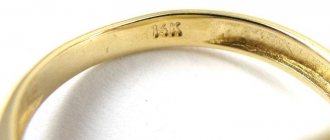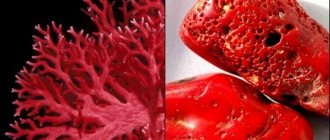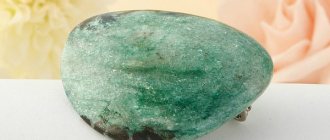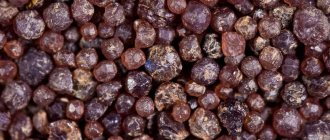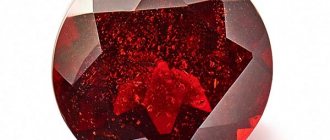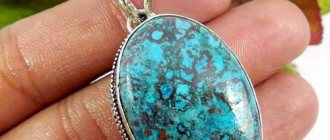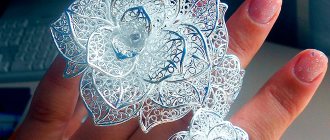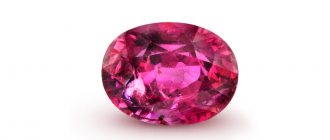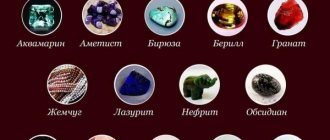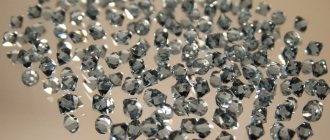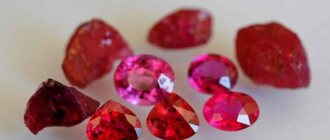| Stone type | Semiprecious |
| Varieties | Almandine, andradite, grossular, pyrope, spessartine, uvarovite |
| Transparency | Transparent |
| Shine | Glass |
| Mohs hardness scale | 7,5 |
| Chemical composition | R3R2[SiO4]3 |
| Color | White, green, red, orange, purple, black |
| Owner's color type | Summer autumn |
| Owner's temperament | Choleric |
| Names | Alexandra, Alla, Anton, Antonina, Valentina, Valeria, Varvara, Vasily, Galina, Daniil, Eva, Irina, Lyudmila, Maya, Maria, Mark, Matvey, Nellie, Nikita, Oksana, Roman, Tamara, Eduard |
| Zodiac sign | Gemini, Libra, Aquarius, Virgo, Capricorn, Leo, Scorpio, Sagittarius |
| Date of Birth | from July 23 to August 22 from October 24 to November 22 from November 23 to December 21 from December 22 to January 20 from January 21 to February 18 |
| Chinese horoscope | Goat, horse, monkey |
| Element | Water, Air, Earth, Fire |
| Planet | Venus, Mars, Jupiter |
| Day of the week | Tuesday |
| Month | January, October |
| Season | Winter autumn |
| Numerology vibration | 6, 8 |
| Chakra | Anahata, Muladhara, Svadhisthana |
| What stones is it compatible with? | Agate, heliotrope, emerald, sapphire |
| What stones is it not compatible with? | Aventurine, aquamarine, beryl, turquoise, diamond, heliodor, pearl, lapis lazuli, moonstone, ruby, peridot, chrysoprase, zircon |
| Therapeutic effect (problems) | Blood pressure, hormonal imbalance, detoxification, slow metabolism, libido, wounds, skin damage, burns |
| Therapeutic effect (on organs) | Organs of the gastrointestinal tract, cardiovascular system, joints |
| Magic properties | Material well-being, self-confidence, strengthening relationships, energy depletion |
There are differences between garnet and ruby, despite the fact that the minerals are visually similar to each other.
Stones have different chemical composition and physical properties, but their value is different. Rubies are often replaced by unscrupulous sellers with natural garnet or artificial fakes. The techniques discussed will help verify the authenticity of copies.
Differences in chemical and physical properties
In ancient times, a person could not distinguish a natural garnet stone from a ruby, since both minerals have a rich red color and pronounced shine. When the properties of gems began to be studied by mineralogists, clear differences were found.
Be sure to watch: How and where diamonds are mined
Physicochemical properties are given in the table:
| Mineral | Chemical formula | Class | Hardness | Density | Shine | Transparency | Other properties |
| Ruby | Aluminum oxide with chromium | Corundums, oxide class | 9 | 4 g/cm3 | Pronounced, glassy | Various degrees | Trigonal system, conchoidal fracture, |
| Garnet (amaldines and pyropes) | Silicate of aluminum, iron, and other elements that determine the color of the mineral | Silicate class | 7 | 4.2/cm3 | Subdued glass or wax | Various degrees | The color is determined by impurities of other chemical elements; the crystals have the shape of rhombic dodecahedrons. |
Ruby is a precious stone, and garnet in all its varieties is semi-precious.
https://www.instagram.com/p/BpHJx6EnESm/
Professional help
The best way to make sure you're spending your hard-earned money on a Ruby and not a Garnet is to shop at a reputable establishment and have a professional with you to oversee your purchase. Whether you are purchasing a Ruby or a Garnet, you will want to be provided with the most helpful and professional information possible.
As with many other gemstones and other items in general, there is the "original" and then there is the "copycat". “Original” - prestige, beauty and quality, and, of course, a hefty price tag. If you are set on buying a genuine Ruby and want to make sure that you are not being sold a garnet, you can follow these tips and tricks and gain as much knowledge as possible on the topic. However, if Ruby is simply not in your budget, you should really consider Garnet, although it is inferior to Ruby, it is also attractive. It's cute, affordable, and can be purchased in much larger sizes than the equivalent sized Ruby.
Visual and other means of differentiation
A ruby costs several times more than a garnet. Often a cheaper stone replaces a precious crystal in jewelry. Only a jeweler can accurately determine the type of stone. But if you have instruments such as a dichroscope, a magnet, a magnifying glass, an ultraviolet lamp and high-precision electronic scales, you can try yourself as an expert.
How to test minerals:
- Take a dichroscope (a device for detecting two-colors) and direct a beam of its color onto the crystal. If the shade changes from light to dark, this is a sign of a ruby. Pyropes do not have pleochroism, so they do not change the saturation of the shade under the beam.
- If you illuminate a ruby with an ultraviolet lamp, the inside of the specimen will glow orange. This property is called luminescence. Pyropes do not have it.
- In a real ruby, when viewed through a microscope, inclusions in the form of tubes can be seen. Pomegranate has a homogeneous structure.
- All corundums have a high hardness rating, so they can easily scratch topaz or crystal, rated 8 points. If you try to damage these minerals with a garnet, the attempt will be unsuccessful, since this stone is assigned 7 points.
- The ruby shines and shines like a diamond. Garnet is characterized by a less pronounced shine.
- If you bring pyrope to a magnet, it will be attracted because it contains iron impurities. Ruby is aluminum oxide with chromium, so it is not magnetic. However, a less valuable mineral may be low in iron, which is why the magnetic properties will not be clearly visible. In this case, the specimen should be placed on a high-precision scale and a magnet should be held up. If the mass changes, then this is a sign of pomegranate.
Important! If there is no special equipment at home, the gem of interest should be taken to a gemologist for examination.
Emerald Green, golden green
If we were to collect gemstones (list) by value, emerald would top it. An alternative name for the stone, according to one version, means “green ice.” A precious emerald is a stone whose main value category is its color saturation. Therefore, bright, undamaged emeralds with a carat value higher than 5 are sometimes valued higher in jewelry than the same diamonds.
Emeralds are graded in three categories - tone, saturation and transparency. In ancient times, emerald was worn in the rings of thinkers and orators, as well as great rulers. Large emeralds were used to decorate household items - cutlery, vases. Sometimes the stone became a decoration for the entrance portal to a castle or other residence.
Which stone is more expensive - diamond or emerald? If we are talking about stones of the same size, clarity and brightness, then diamonds from 3 carats cost less than the same emeralds. To the question why an emerald is more expensive than a diamond, the answer is simple - there are not very many large natural emeralds in the world.
Place of extraction: emerald is mined on almost all continents! Large and significant deposits are located in Colombia and Egypt - the largest and purest stones are transported from here. Emerald mining is also developed in Brazil and the Urals.
Magical properties: emerald helps develop intuition, increases the thirst for knowledge, helps make difficult decisions; as a talisman, it fights the owner’s harmful inclinations - love of gambling, deceit, meanness; emerald protects against bad connections and brings good luck.
Medicinal properties: the stone is credited with a variety of positive effects on the body - it treats insomnia, increases resistance to stress when worn on the chest; in the form of earrings or tiara decoration, the stone can prevent headaches associated with pressure and also improves vision.
How to check the authenticity of an emerald?
When exposed to ultraviolet light, natural emerald acquires a brown tint.
Almost all natural emeralds have inclusions that can be seen under a magnifying glass - in fakes they are imitated using easily visible air bubbles.
Still have questions? Leave a request and we will contact you!
Order a consultation
We recommend that you familiarize yourself with the catalogs:
- Diamond rings
- Rings with emerald
- Ruby rings
- Rings with sapphires
Options for imitation ruby and garnet
Beautiful specimens of real stones are rarely found in nature. Therefore, technologies have been developed to create substitutes from natural and synthetic raw materials.
Be sure to watch: How to clean crystal to a shine
Natural
Almandine, pyrope, rubellite, and red spinel are used as cheaper ruby substitutes. Such copies are natural, since they are represented by natural gems. Red spinel has many similarities with scarlet corundum. But if you examine both crystals using a refractometer and a dichroscope. Spinel has a single refraction because it has a cubic system.
PRIVATE LIFE OF RUBY – 2EnergySellers of stones usually write on their websites: if you want the stone to be...
Published by Lala Lotos. Jewelry that works. Sunday, April 6, 2014
Ruby is characterized by double refraction. The precious mineral has fibrous inclusions of rutile, which can be seen under a microscope. Spinel has a strawberry hue, while ruby has a blood red color without pink tones.
Garnet is often replaced with scarlet-colored cubic zirconia. Both stones have different hardness levels, so cubic zirconia can be easily scratched with a knife.
Is it easy to distinguish a garnet from a ruby at home?
Not really
Artificial
Synthetic specimens are made without the use of natural raw materials, and therefore have a low cost. Counterfeits are made from plastic and glass treated with dye.
A counterfeit specimen obtained from synthetic materials can be easily distinguished from any natural crystal. The following techniques will help you do this:
- The artificial gem quickly heats up from the warmth of your hands. Genuine pyropes and rubies always remain cool to the touch, so they cannot be heated.
- If you apply a drop of lemon juice to a test sample of natural origin, the color and intensity of the shine of the stone will not change. If the crystal becomes cloudy, this indicates that it is fake.
- It is easy to identify a plastic insert: you need to heat the tip of the needle on a fire and touch it to the sample. If there is an unpleasant chemical smell, this means that you are dealing with a cheap copy.
- Natural rubies and pyropes are hard gems. They cannot be damaged with a knife or needle. However, synthetic copies will deteriorate from such exposure.
- It is recommended to examine the mineral under a microscope or through a magnifying glass. If the sample has a uniform color, you should doubt its authenticity. Each mineral created by nature has an uneven tone due to the influence of environmental factors.
Published by Natasha Lepekhyna Tuesday, July 11, 2017
Important! To be sure of the origin of the purchased stones or products with them, you need to make purchases in jewelry stores with a good reputation.
Raw crystals are usually offered at specialized auctions. When purchasing minerals, be sure to check the seller’s information about the origin. Natural crystal a priori cannot cost less than the market price. This is especially true for precious rubies.
How to distinguish a ruby from a fake: properties of a genuine stone.
This mineral is very hard and has a bright red hue, which ruby owes to the significant amount of chromium in its composition. There are relatively few rubies in nature, large stones are especially rare, and due to the high level of demand for jewelry with this stone, buyers are often offered to purchase a fake. Often, instead of a genuine ruby, synthetic stones are used in jewelry, which visually fully correspond to a valuable gem, but do not possess the qualities inherent in a ruby.
Main conclusions
- Ruby and garnet are stones that are similar to each other. It is important to distinguish them because they have different costs. Garnet is a semi-precious mineral and ruby is a precious mineral.
- Both species have different physical and chemical properties, although they differ in appearance from each other.
- Special equipment will help you examine minerals to evaluate shade, the presence of pleochroism, and magnetization.
- Copies can be natural or synthetic. Natural fakes are cheaper substitutes that visually resemble the original crystal. Synthetic samples are made of glass and plastic.
- Genuine stones can only be purchased in specialized stores or at auctions. The seller must clarify information about the origin of the crystal and objectively evaluate the declared value.
Share your experience using ruby and garnet and leave feedback in the comments.
Paraiba Tourmaline
Paraiba tourmalines are the most valuable variety of the tourmaline mineral. They were discovered in 1988 in the state of Paraiba in Brazil, after which they were named. They are valued for their unique neon blue color. This rare color is caused by copper impurities.
The bulk of Paraiba tourmalines today come from Mozambique. Typically, specimens from there have light to medium color in a greenish-blue palette. Prices for good purity, saturated heated Mozambican stones weighing 5 carats are in the range of $8,000-12,000/carat. But Brazilian samples can sometimes cost 5 times more. They are usually very brightly colored, but are rarely larger than 2 carats. The cost of unheated top stones from Brazil with a unique weight of more than 5 carats sometimes reaches $40,000-50,000/carat. High-quality Brazilian specimens are considered one of the best investments in colored stones, because their deposits are almost exhausted, and demand for them significantly exceeds supply.
Blue sapphire
Classic blue sapphire is the most expensive color. The most valuable colors of blue sapphires have the trade names “royal blue” and “cornflower blue.” The color is determined by the presence of titanium and iron in the composition. Unheated sapphires (without enhancement of color and clarity) are valued significantly higher than heated ones and are more rare. High-quality unheated sapphires from Kashmir and Burma (Myanmar) command the highest price per carat. Blue sapphires of excellent quality most often come to the market from Sri Lanka, and their cost is lower. Blue sapphires have a Mohs hardness of 9.
An unheated stone from Sri Lanka of good quality weighing 5 carats can cost around $4,500/carat, while a heated stone is about 1.5 times cheaper. And unheated from Kashmir - from $30,000/carat. The highest price paid for 1 carat of Kashmir sapphire is $243,000. This happened when the 27.68-carat stone was sold at Sotheby's in 2015 for $6.7 million. The record "total" price for a blue sapphire sold at auction belongs to the 392.52-carat Blue Belle of Asia sapphire, mined in Sri Lanka. It was sold in November 2014 at Christie's in Geneva for US$17.3 million ($44,000 per carat).
Blue Diamond
Blue and blue diamonds are one of the most expensive substances on our planet. Diamonds of this color are very, very rare. Their unusual color is caused by the presence of boron atoms in the crystal lattice of the mineral. Diamond without impurities is absolutely colorless crystalline carbon. Diamonds have a maximum hardness rating of 10 on the Mohs scale. Most blue diamonds have weak color saturation and often have additional grayish or greenish tints that reduce their value. Fancy Vivid Blue diamonds are the most valuable.
Typically, specimens weighing up to 1 carat are presented on the world market. A stone measuring 3-4 mm and weighing about a quarter of a carat can cost 300,000-500,000 US dollars per carat. The most expensive blue diamond sold at auction is the 14.62-carat Oppenheimer Blue, sold at Christie's in Geneva in May 2021 for $57.5 million ($3.93 million/carat). The record price per carat (more than $4 million) belongs to the diamond “The Blue Moon of Josephine” weighing 12.03 carats, which went under the hammer in November 2015 at Sotheby's auction in Geneva for $48.4 million. And the most famous blue diamond is the Hope Diamond, weighing 45.52 carats, kept in the Smithsonian Museum in the USA. It is a stone with a rich history and is valued at approximately $350 million. Most of the best blue diamonds were mined in South Africa and Australia.
